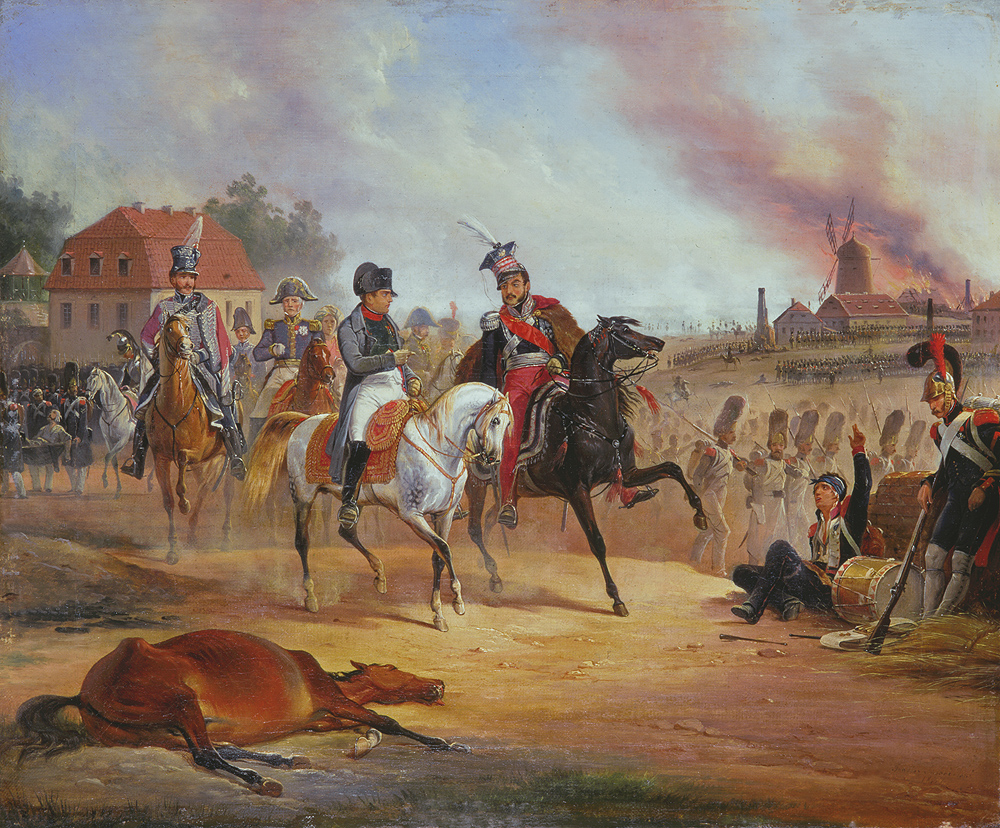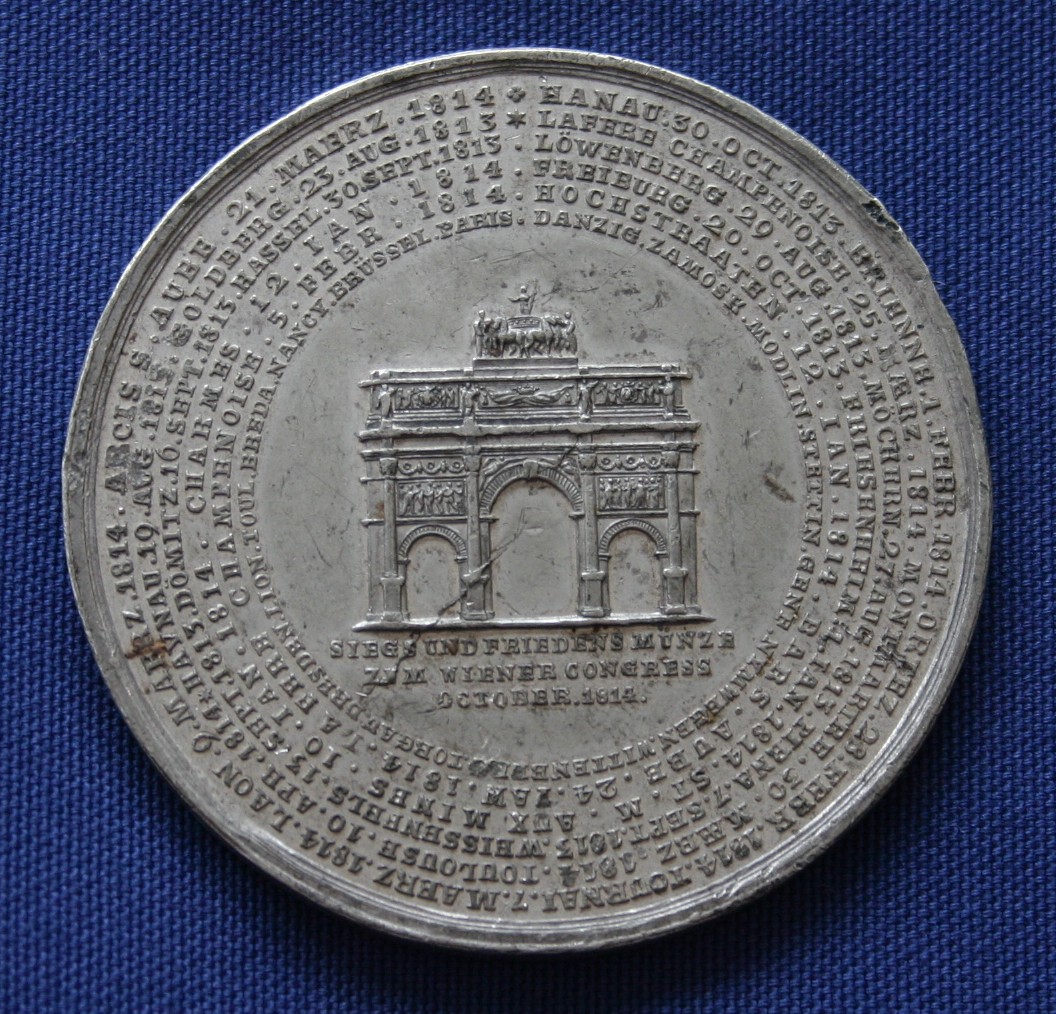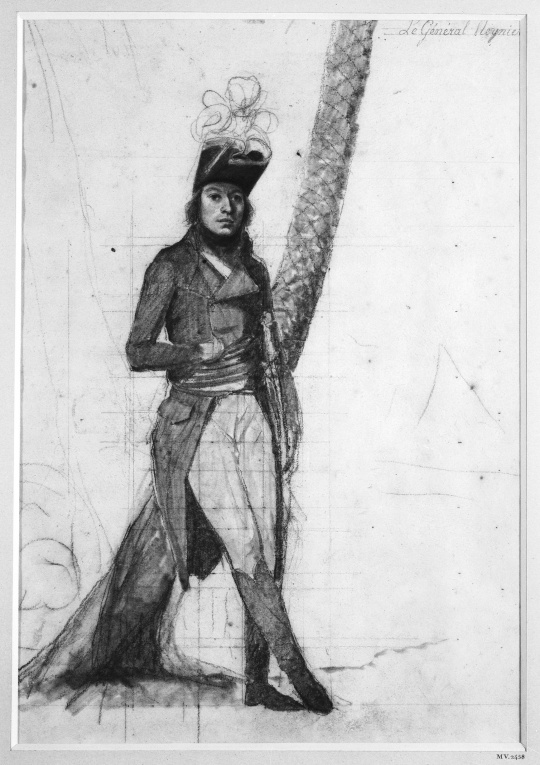|
Battle Of Leipzig
The Battle of Leipzig, also known as the Battle of the Nations, was fought from 16 to 19 October 1813 at Leipzig, Saxony. The Coalition armies of Austria, Prussia, Sweden, and Russia, led by Tsar Alexander I, Karl von Schwarzenberg, and Gebhard von Blücher decisively defeated the ''Grande Armée'' of French Emperor Napoleon Bonaparte. Napoleon's army also contained Polish and Italian troops, as well as Germans from the Confederation of the Rhine (mainly Saxony and Württemberg). The battle was the culmination of the German campaign of 1813 and involved about 560,000 soldiers, 2,200 artillery pieces, the expenditure of 400,000 rounds of artillery ammunition, and 133,000 casualties, making it the largest battle of the Napoleonic Wars, and the largest battle in Europe prior to World War I. Decisively defeated, Napoleon was compelled to return to France while the Sixth Coalition kept up its momentum, dissolving the Confederation of the Rhine and invading France early the ... [...More Info...] [...Related Items...] OR: [Wikipedia] [Google] [Baidu] |
German Campaign Of 1813
The German campaign () was fought in 1813. Members of the Sixth Coalition, including the German states of Austria and Prussia, plus Russia and Sweden, fought a series of battles in Germany against the French Emperor Napoleon, his marshals, and the armies of the Confederation of the Rhine – an alliance of most of the other German states –, which ended the domination of the First French Empire. After the devastating defeat of Napoleon's ''Grande Armée'' in the Russian campaign of 1812, Ludwig Yorck von Wartenburg, Johann Yorck – the general in command of the ''Grande Armée'''s German auxiliaries (') – declared a ceasefire with the Russians on 30 December 1812 via the Convention of Tauroggen. This was the decisive factor in the outbreak of the German campaign the following year. The spring campaign between France and the Sixth Coalition ended inconclusively with a summer truce (Truce of Pläswitz). Via the Trachenberg Plan, developed during a period of ceasefire in the sum ... [...More Info...] [...Related Items...] OR: [Wikipedia] [Google] [Baidu] |
Gebhard Leberecht Von Blücher
Gebhard Leberecht von Blücher (; 21 December 1742 – 12 September 1819), ''Graf'' (count), later elevated to ''Fürst'' (prince) von Wahlstatt, was a Kingdom of Prussia, Prussian ''Generalfeldmarschall'' (field marshal). He earned his greatest recognition after leading his army against Napoleon I at the Battle of Leipzig in 1813 and the Battle of Waterloo in 1815. Blücher was born in Rostock, the son of a retired army captain. His military career began in 1758 as a hussar in the Swedish Army. He was captured by the Prussians in 1760 during the Pomeranian War, Pomeranian Campaign and thereafter joined the Prussian Army, serving as a hussar officer for Prussia during the remainder of the Seven Years' War. In 1773, Blücher was forced to resign by Frederick the Great for insubordination. He worked as a farmer until the death of Frederick in 1786, when Blücher was reinstated and promoted to colonel. For his success in the French Revolutionary Wars, Blücher became a major general ... [...More Info...] [...Related Items...] OR: [Wikipedia] [Google] [Baidu] |
11th Army Corps (Russian Empire)
The 11th Army Corps was an Army corps in the Imperial Russian Army Before the war the unit was stationed with the Kiev Military District. Composition (1914) * 11th Infantry Division (Lutsk) * 32nd Infantry Division ( Rovno) * 11th Cavalry Division (Dubno) * 11th Mortar Artillery Battalion * 21st Engineering Battalion Commanders * Alexey Ivanovich Shakhovskoy (1876–1879) * Lieutenant-General Prince Ivan Shakhovskoy, (1888–1892) * Pavel Grigorievich Dukmasov (1894–1895) * Dmitrij Petrovich Dohturov (1895–1900) * Lieutenant General Vladimir Nikolayevich Filipov, (3.03.1900–12.5.1903) * Lieutenant General Alexandr Yakovlevich Tal (1.07.1903–1905) * Lieutenant-General (from 6.12.1907 city – General of Infantry) Ivan Aleksandrovich Fullon, (1.06.1905–7.08.1911) * Lieutenant-General (from 6.12.1912 city – General of Infantry) Nikolai Ivanovich Podvalnyuk, (7.08.1911–13.12.1912) * General of the cavalry Vladimir Sakharov Vladimir Nikolayevich Sakharov ... [...More Info...] [...Related Items...] OR: [Wikipedia] [Google] [Baidu] |
10th Army Corps (Russian Empire)
The 10th Army Corps was an Army corps in the Imperial Russian Army. Composition The 10th Army Corps was composed of the 9th Infantry Division, 31st Infantry Division and the 10th Cavalry Division. Part of * 3rd Army: 1914-1916 * 4th Army: 1916 * 2nd Army: 1916-1917 * 10th Army: 1917 * 9th Army: 1917 Commanders *1813-1815: Peter Kaptzevich *1876-1878: Semyon Vorontsov *1878-1879: Vasily Fedorovich Rall *1889-1890: Victor Deziderjevitch Dandevill *1890-1901: Victor Fedorovitch Winberg *1901-1904: Kapiton Konstantinovitch Slutchevsky *1904-1905: Konstantin Tserpitsky *1906-1907: Pavel Alexandrovich Layming *1907-1911: Yakov Zhilinsky Yakov Grigoryevich Zhilinsky (; 27 March 1853 – 1918) was a Russian cavalry general, chief of staff of the Imperial Russian Army from 2 February 1911 to 4 March 1914. He one of the main culprits of the failure of the East Prussian Campaign in ... *1911-1914: Thadeus von Sivers *1914-1916: Nikolai Protopopov *1916-1917: Nikolai Danilov * ... [...More Info...] [...Related Items...] OR: [Wikipedia] [Google] [Baidu] |
9th Army Corps (Russian Empire)
The 9th Army Corps was an Army corps in the Imperial Russian Army The Imperial Russian Army () was the army of the Russian Empire, active from 1721 until the Russian Revolution of 1917. It was organized into a standing army and a state militia. The standing army consisted of Regular army, regular troops and .... Composition * 5th Infantry Division * 42nd Infantry Division * 9th Cavalry Division Part of * 3rd Army: 1914–1916 * 4th Army: 1916 *3rd Army: 1916 *4th Army: 1916 * 2nd Army: 1916–1917 Commanders *1877–1878: Nikolay Kridener *1878–1886: Arkady Dmitrievich Stolypin *1912–1915: Dmitry Shcherbachev *1915–1916: Abram Dragomirov *1916-April 1917 : Nikolay Kiselevsky *May–September 1917: Pyotr Telezhnikov *September-November 1917: Andrey Snesarev {{russia-hist-stub Corps of the Russian Empire Military units and formations established in 1876 Military units and formations disestablished in 1918 1876 establishments in the Russian Empire ... [...More Info...] [...Related Items...] OR: [Wikipedia] [Google] [Baidu] |
8th Army Corps (Russian Empire)
The 8th Army Corps was an Army corps in the Imperial Russian Army. Composition * 14th Infantry Division * 15th Infantry Division * 8th Cavalry Division Part of * 8th Army: 1914-1916 * 11th Army: 1916 * 9th Army: 1916 * 4th Army: 1916-1917 Commanders * Fyodor Radetzky: 1877-1878 * Radko Dimitriev: 1914 * Vladimir Dragomirov: 1915-1916 *Anton Denikin Anton Ivanovich Denikin (, ; – 7 August 1947) was a Russian military leader who served as the Supreme Ruler of Russia, acting supreme ruler of the Russian State and the commander-in-chief of the White movement–aligned armed forces of Sout ...: 1916-1917 References {{Russian Empire Ground Forces Corps of the Russian Empire Military units and formations established in 1876 Military units and formations disestablished in 1918 1876 establishments in the Russian Empire ... [...More Info...] [...Related Items...] OR: [Wikipedia] [Google] [Baidu] |
Joachim Murat
Joachim Murat ( , also ; ; ; 25 March 1767 – 13 October 1815) was a French Army officer and statesman who served during the French Revolutionary and Napoleonic Wars. Under the French Empire he received the military titles of Marshal of the Empire and Admiral of France. He was the first Prince Murat, Grand Duke of Berg from 1806 to 1808, and King of Naples as Joachim-Napoleon () from 1808 to 1815. Born in Labastide-Fortunière in southwestern France, Murat briefly pursued a vocation in the clergy before enlisting in a cavalry regiment upon the outbreak of the French Revolution. Murat distinguished himself under the command of General Napoleon Bonaparte on 13 Vendémiaire (1795), when he seized a group of large cannons and was instrumental in suppressing the royalist insurrection in Paris. He became Napoleon's aide-de-camp and commanded the cavalry during the French campaigns in Italy and Egypt. Murat played a pivotal role in the Coup of 18 Brumaire (1799), which brough ... [...More Info...] [...Related Items...] OR: [Wikipedia] [Google] [Baidu] |
Józef Poniatowski
Prince Józef Antoni Poniatowski (; 7 May 1763 – 19 October 1813) was a Polish general, minister of war and army chief, who became a Marshal of the French Empire during the Napoleonic Wars. A nephew of the King of Poland and Grand Duke of Lithuania Stanisław II August (), Poniatowski began his military career in 1780 in the Austrian army, where he attained the rank of colonel. In 1789, after leaving Austrian service, he joined the Polish–Lithuanian Commonwealth army at the request of his uncle. Poniatowski, now in the rank of major general and commander of the Royal Guards, took part in the Polish–Russian War of 1792, leading the crown forces at the victorious Battle of Zieleńce. After the king's support for the Targowica Confederation of 1792, Poniatowski felt compelled to resign. In 1794 he participated in the Kościuszko Uprising and took charge of defending Warsaw - for which the Russian authorities subsequently exiled him until 1798. In 1807, after Napoleon Bon ... [...More Info...] [...Related Items...] OR: [Wikipedia] [Google] [Baidu] |
Jean Reynier
Divisional general, Divisional-General Jean Louis Ébénézer Reynier (14 January 1771 – 27 February 1814) was a French Army officer who served in the French Revolutionary and Napoleonic Wars. He rose in rank to become a general officer during the French Revolutionary Wars and led a division under Napoleon in the French invasion of Egypt and Syria. During the Napoleonic Wars, he continued to hold important combat commands, eventually leading an army corps during the Peninsular War in 1810–1811 and during the War of the Sixth Coalition in 1812–1813. Background and education Reynier was born on 14 January 1771 in Lausanne to a Protestant family, the son of Jacques François Reynier, a physician, and Caroline Chapuis. Through his father he was descended from French Huguenots from the Dauphiné who fled to Switzerland after the revocation of the Edict of Nantes. His brother Jean-Louis-Antoine (1762–1824), a naturalist and archeologist, held government posts in the French adm ... [...More Info...] [...Related Items...] OR: [Wikipedia] [Google] [Baidu] |
Nicolas Oudinot
Nicolas Charles Oudinot, duc de Reggio (; 25 April 1767 – 13 September 1847), was a French general of the French Revolutionary Wars and the Napoleonic Wars. He is known to have been wounded 34 times in battle, being hit by artillery shells, sabres, and at least twelve bullets over the course of his military career. A Marshal of the Empire, he is best known for his contributions to the Napoleonic Wars with his famous grenadier division. Oudinot is one of the Names inscribed under the Arc de Triomphe, Eastern pillar Columns 13, 14. Early life Nicolas Charles Oudinot was the son of Nicolas Oudinot and Marie Anne Adam, the only one of their nine children to live to adulthood. His father was a brewer, farmer and distiller of brandy in Bar-le-Duc, Lorraine. He decided upon a military career, and served in the regiment of Medoc from 1784 to 1787, when, having no hope of promotion on account of his non-noble birth, he retired with the rank of sergeant. French Revolutionary Wars Th ... [...More Info...] [...Related Items...] OR: [Wikipedia] [Google] [Baidu] |
Michel Ney
Michel Ney, 1st Prince de la Moskowa, 1st Duke of Elchingen (; 10 January 1769 – 7 December 1815), was a French military commander and Marshal of the Empire who fought in the French Revolutionary Wars and the Napoleonic Wars. The son of a cooper from Saarlouis, Ney worked as a civil servant until 1787 when he enlisted in a cavalry regiment, right before the outbreak of French Revolution. Distinguishing himself as a cavalry officer in the War of the First Coalition, he quickly rose through the ranks and, by the Battle of Hohenlinden (1800), he had been promoted to divisional general. On Napoleon's proclamation of the French Empire, Ney was named one of the original 18 Marshals of the Empire. He played an instrumental role during Napoleon's subsequent campaigns, seeing action at Elchingen (1805), Jena (1806) and Eylau (1807). Ney commanded the French rearguard during the disastrous invasion of Russia, for which he was lauded as "the bravest of the brave" by the empero ... [...More Info...] [...Related Items...] OR: [Wikipedia] [Google] [Baidu] |
Auguste De Marmont
Auguste Frédéric Louis Viesse de Marmont, duc de Raguse (; 20 July 1774 – 22 March 1852) was a French general and nobleman who rose to the rank of Marshal of the Empire and was awarded the title (). In the Peninsular War Marmont succeeded the disgraced André Masséna in the command of the French army in northern Spain, but lost decisively at the Battle of Salamanca as France ultimately lost the war in Spain. At the close of the War of the Sixth Coalition, Marmont went over to the Bourbon Restoration in France, Restoration and remained loyal to the Bourbons through the Hundred Days. This gave Marmont a reputation as a traitor among the remaining Bonapartism, Bonapartists, and in French society more broadly. He led the royalist Paris garrison during the July Revolution in 1830, but his efforts proved incapable of quelling the revolution, leading King Charles X of France, Charles X to accuse Marmont of betraying the Bourbons as he had betrayed the Bonapartes. Marmont departed ... [...More Info...] [...Related Items...] OR: [Wikipedia] [Google] [Baidu] |







